- News
- Reviews
- Bikes
- Components
- Bar tape & grips
- Bottom brackets
- Brake & gear cables
- Brake & STI levers
- Brake pads & spares
- Brakes
- Cassettes & freewheels
- Chains
- Chainsets & chainrings
- Derailleurs - front
- Derailleurs - rear
- Forks
- Gear levers & shifters
- Groupsets
- Handlebars & extensions
- Headsets
- Hubs
- Inner tubes
- Pedals
- Quick releases & skewers
- Saddles
- Seatposts
- Stems
- Wheels
- Tyres
- Tubeless valves
- Accessories
- Accessories - misc
- Computer mounts
- Bags
- Bar ends
- Bike bags & cases
- Bottle cages
- Bottles
- Cameras
- Car racks
- Child seats
- Computers
- Glasses
- GPS units
- Helmets
- Lights - front
- Lights - rear
- Lights - sets
- Locks
- Mirrors
- Mudguards
- Racks
- Pumps & CO2 inflators
- Puncture kits
- Reflectives
- Smart watches
- Stands and racks
- Trailers
- Clothing
- Health, fitness and nutrition
- Tools and workshop
- Miscellaneous
- Buyers Guides
- Features
- Forum
- Recommends
- Podcast
feature
 Cycling and sustainability Dec 2023
Cycling and sustainability Dec 2023Cycling and sustainability: What the bike industry is doing, and what you can do to further reduce your carbon footprint as a cyclist
While some cyclists may consider themselves champions of sustainability by their love for cycling, the bike industry - despite some corners of it projecting a very eco-friendly image - grapples with the same environmental challenges as any other global industry. From product launches to the world of professional racing, it's an uncomfortable truth that many aspects of our beloved hobby and mode of transport contribute to a large carbon footprint.
It's probably fair to say that most of us harbour a desire of some sort to effect positive change and minimise any negative impacts of our hobbies and preferred way of getting around (if cycling is your primary mode of transport) on the environment. However, when looking into the intricacies of cycling, especially concerning manufacturing and distribution, that positivity can turn to frustration.
As already mentioned, cycling is not just a professional sport, but it's a hobby and a way of getting from A to B for many of us, and a way of connecting more with nature and our surroundings. But it's an uncomfortable truth that today, the outlook for what our environment may look like in 50 years is not that rosy, and if we don't see change, we could see some of our favourite riding spots fall into disrepair and despair. It's collective action that is needed, and this means the bike industry is also stepping up its game when it comes to sustainability, realising that it actually matters rather than just bandying the term around as a marketing tool.
In the aftermath of the COP28 climate summit, we've been exploring some of the recent environmental developments in the bike industry, and considering what we can do to further reduce our carbon footprint as cyclists. While chatting with experts revealed an increased need for action, there are also plenty of encouraging signs of positive change, and innovative strides are being made - at least by some.
What is the environmental impact of the bike industry?
Chatting to one of the industry's leading sustainability bodies, Shift Cycling Culture, it is easy to pick up a tone of optimism - although the non-profit organisation's executive director Sandra Bradnt acknowledges that there is a long way to go to make the bike industry properly sustainable, and the industry as a whole has been a little slow in taking action.
"The [bike] industry has been a slow adopter of sustainability. Because of that, it can feel overwhelming for companies to find the place where to get started. Other industries have started a little earlier so they have been able to take the journey at a different pace, " Brandt says.
She also highlights the disparity within the industry. Some companies are taking huge leaps, whereas others are moving very slowly in adopting sustainability into their operations in any way.
Investing in sustainability takes some financial capital too, and requires companies to rethink their priorities. Now, it's hardly news to anyone that the bike industry has also experienced some very turbulent years. From the Covid-fuelled cycling boom, we've gone to witnessing major brands reporting their biggest-ever losses, and some folding altogether. The trajectory as a whole looks positive, though.
The bike industry, which globally was valued at about $64.6B in 2022, is expected to reach $135.02 billion in 2030. The very same year marks what many companies use in their sustainability reports as the target for halving their emissions. Thriving towards a more sustainable business model while maintaining a competitive edge on the market remains a challenge which Brandt also echoes.
"One of the other challenges is to make sure they [the companies] have all the right resources behind those topics to ensure it's not just a tick-in-a-box exercise, but an opportunity to drive innovation and build a more resilient and competitive company," Brandt says.
"I hope that sustainability would be seen as an advantage rather than just a necessity."
Clothing and accessories
Cycling clothing might not be your first thought when it comes to sustainability, because you don't necessarily need proper cycling gear to ride a bike. The apparel industry is interesting to start with, though, as it's the broader textile industry where a lot of sustainability road maps have been created earlier than in any other industry. The advantages that have happened in what we often refer to as the 'fast-fashion' industry are now used as examples also in the cycling clothing market, and not only in connection with clothing.
> How environmentally sustainable is your cycle clothing?
The textile industry has long and quite straightforwardly been connected to climate change. It was at the core of the industrial revolutions of the 18th and 19th centuries, which were also closely connected to the boom in burning coal and other fossil fuels to drive production forward. Fast forward a century or two, and the industry is still one of the largest in the world.
But with its long history, the fast fashion industry has gone through a convoluted evolution of sustainability efforts. Much like the hotel towels that were one of the first greenwashing efforts, the clothing industry is also ripe with examples of sustainability as a means to attract more consumers, which in effect can lead to overconsumption... which then is not sustainable at all, really. If you buy two items that have been made from recycled materials, it's hardly more environmentally friendly than buying one item that lasts you a lifetime, especially if the items are still produced in such large quantities that they end up in the landfills.
> How green is your waterproof cycling jacket?
We've already seen the shift in the cycling apparel industry as the discussion around the environmental impact of our waterproof garments surfaced, largely caused by Gore's announcement of discontinuing the well-loved Shakedry fabric.
However, most cycling clothing brands' sustainability efforts are focused on the use of sustainable materials. One smaller brand in the UK trying to challenge the existing model of manufacturing large amounts of garments is Kostüme.
"Kostüme is built on the concept of more frequent but smaller volume limited edition collections, which are only available to pre-order for a limited time. Each collection is built around a unique artwork commissioned by a leading visual artist. The intention is to give the consumer more choice but without flooding the marketing with excess products that might well end up clogging shelves or in landfill," founder Ed Bartlett explains.
"When you see first-hand what goes into manufacturing a product - development, fabrics, manufacturing, packaging, shipping, retail, more shipping - the thought of even one of those products being wasted just seems unthinkable. And yet, this is the core business model of pretty much every apparel brand on the market. What we are seeing right now - perpetual discounting, companies posting massive losses and even going bust - is a direct result. The model is broken!" Bartlett exclaims.
Bartlett also admits that the culture of constant sales and very cheap prices also drives consumers to wait for discounts and muddles their expectations of what is a fair and justified price for a good quality garment.
Overall, the clothing and accessories industry is steering more towards the use of sustainably-produced materials, less carbon-intensive manufacturing and offering repair schemes. Many large brands such as Rapha, Maap, Apidura and Restrap offer repair schemes, which aim to make your garments and bags last a little bit longer.
To find out whether the garment is sustainably manufactured, you can look out for certain certifications - although as Bartlett says, arguably nothing is fully 'sustainable' in the current market:
"Things to look out for when it comes to fabrics include OEKO-TEX and bluesign accreditation - and you only need to read the reviews of our bib shorts to see how far recycled fabrics have come in terms of quality and performance.
"Unfortunately, despite using 100% recycled fabrics across our products, we are still not even close to being able to claim that we are ‘sustainable’, and neither is any other brand, despite what they might appear to say.
"Yes, it’s an improvement - up to 30% less emissions compared to virgin polyester - but that’s not zero emissions, nor is it dealing with the micro-plastics issue, or the fact that very few items of clothing ever get recycled.
"Ultimately we have to accept that we are on a journey currently, not at the destination."
What can you do: Aim to use your cycling clothing as long as you can, care for it and repair it. If possible, buy from brands that are committed to sustainability. Perhaps look for smaller companies that can overcome some of the hurdles the large companies face.
Frame material
Most of the bikes in the world are made out of four materials: aluminium, steel, carbon fibre or titanium. If you look at your beloved bike, it's the frame that is behind most of the CO2 emissions linked to its manufacturing. We've taken a look at how green your bike frame is in-depth here, too.
Trek is one of the large bike manufacturers that started openly reporting their sustainability efforts, and as controversial as they can be, those reports have provided an interesting insight into what it takes to put a bike together from an environmental perspective.
Trek's most popular bike, the Marlin mountain bike, takes about 81kg in CO2 emissions to manufacture. This figure is down from the 116kg it took in 2021 when Trek first released its sustainability report.
The largest contributors to the 116kg of CO2 figure were the frame assembly (17kg), and fork assembly (15kg), followed by the rear and front wheels (10kg each). Marlin is a hardtail bike, meaning it has a suspension fork. This adds to its carbon footprint, but comparing it to other Trek models such as the Fuel EX (153kg), Madone aero bike (197kg), or electric MTB Rail (229kg), this shows that it's not only the fork that ups the figures.
Trek says: "Just as different bikes are built for different uses, there’s a great deal of variance in the carbon cost of different models. It’d be nice and simple to reduce the emissions of every Trek model by a flat 30%, but the reality is a bit more complicated. Higher-end electric and mountain bikes, for example, have parts like batteries and shocks that require more of an impact to manufacture."
While looking at these numbers it might seem that manufacturing bikes isn't very green at all, compared to cars bikes are still way less harmful to the environment.
In comparison, making a small hatchback produces about 5.5 tonnes of CO2. Making that car electric adds another two to four tonnes because of the battery and electric motor. But then we have the production of ever-more-popular SUV cars. It takes up to 13 tonnes of CO2 emissions to make one of those.
> Your complete guide to bike frame materials
Back to the materials themselves - Trek also highlights these, saying that aluminium is one of the highest volume materials in its supply chain, making up over three-quarters of the carbon impact of the Marlin 5 when measured by material.
Carbon fibre production is energy-intensive, and as a material it has been notoriously difficult to recycle, not to mention getting rid of it altogether at the end of its lifecycle. Carbon fibre can't be remelted and recycled like aluminium, and until recently, there has not been a sustainable end-of-life solution for extending its lifecycle.
Although this is changing with new innovative technologies, aluminium and steel bikes remain more sustainable than carbon fibre bikes. Titanium is even claimed more sustainable than aluminium, at least if we look at a report conducted by a famous steel tubing manufacturer Reynolds.
The company's 2022 study outlined that one ferrous steel tube produces 2.15kg of carbon emissions, compared to 6.74kg for a titanium tube and 7.43kg per stainless steel tube. The frame alone isn't the main emitter, though, as the majority of the production is in Southeast Asia, and shipping has a considerable environmental cost for each bicycle manufactured.
What can you do: Try not to buy a new bike every year, as tempting as it might be! Your choice of frame material might be dictated by what you want to do with the bike, but again, the fewer bikes you buy the better, and buying used or refurbished is better than a brand-new bike. Even major brands such as Trek offer recycled bikes now. When you can, consider buying from brands that manufacture close to you, such as Brompton in the UK. Perhaps also reconsider before you update your bike because of a 50g weight saving...
Packaging
When reaching out to brands with questions about their sustainability efforts, most of them were quick to point out their efforts in making packaging more sustainable. You might have noticed this yourself: those brake pads that used to come in hard plastic packaging are now in a cardboard box, and brands buffer their new bikes with less plastic and more recyclable, biodegradable materials when they're in transit.
Yvonne Swoboda, Global Director ESG, Canyon Bicycles says: "Not only are we working to reduce the use of plastic in the delivery of our bikes to customers but we are also working on reducing the use of paper/cardboard too. We want to balance the reduction of cardboard and reduction of plastic with a reduction of our CO2 footprint, all the while protecting your bike when it’s in transit. Our bikes are currently delivered in robust cardboard cartons with clever internal cardboard packaging to ensure your bike arrives free from damage in transport.
"This is a good step but we can go further than that. As well as protecting your bike, we also want to protect ancient and endangered forests too. We joined Canopy’s Pack4Good initiative and with this, we are committed to eliminating ancient and endangered forests from our paper packaging supply chain. We will reduce the material we use through design innovations, we will maximise recycled content, and
we will explore and scale alternative Next Gen fibres such as agricultural residues. And where virgin fibre is necessary, we are committed to using FSC-certified (Forest Stewardship Council) fibre."
What can you do: Buy from brands that think about packaging, and make sure you recycle it appropriately at home.
Components
Components, anything from your drivetrain to your wheels, handlebars and saddle, can vary in materials much like your bike frame. As we already established in the above stats from Trek, your wheels can contribute to quite a chunk of emissions.
As with the frame, you might opt for carbon as the material because of its performance benefits. It might be difficult to find refurbished components - although there are some brands such as SRAM that offer a 10% discount to anyone who recycles their retired power meter. The company will also accept all SRAM, Quarq and PowerTap power meters, along with any other brands featuring aluminium crank arms or an aluminium spider as part of their scheme.
Other developments in this field might take longer. The introduction of the cross-compatible CUES component family from Shimano is something that might become more of a standard across the industry. By making components interchangeable, brands can reduce the need for replacing multiple parts and thus prolong the lifecycle of many of their products.
What can you do: Keep your components clean and well serviced, which will extend their lifespan and thus reduce the need for replacing them so regularly. Try to fix things or go to the bike shop to get things repaired rather than replace them immediately, and search for second-hand components where possible. Look to buy from brands who at least say they support environmental initiatives, even if they cannot use recycled materials.
Tyres and tubes
Although bike tyres are not quite as bad as car tyres in producing microparticles in the air, they are far from the most sustainable things to produce. Rubber trees, which are the source of many tyres, are only grown in tropical areas, which means the extracted natural rubber has to be transported a long way to the tyre production plants.
The alternative of using synthetic rubber is hardly better, as that is a derivative of crude oil, which most of us know full well is a non-renewable.
> Ban on disposal of bike tyres in landfill moves closer
As with any product manufactured, often the longer its lifespan, the more sustainable it has the potential to be. Road bike tyres are, however, not meant to last a lifetime, and although a regular cyclist might get away with one set for a full year, those racing more extreme cycling disciplines might swap their rubber for new for each race… not exactly green, is it?
Even if you run your tyres to the lining, there is little getting around the fact that the material is often produced far away. Alternatives are popping up, such as tyres made with natural rubber, which is extracted from the roots of Russian dandelion. We've taken a closer look at everything there is to know about tyres in general in this feature.
Are there any positives to tyres then? Well, yes. Recycling bike tyres has seen a boom in recent years, and much of that can be credited to the German tyre giant Schwalbe. The brand has launched a successful campaign for recycling both inner tubes and tyres (which can be then turned into new tyres) and also introduced the first-ever 'closed-loop' Marathon Green tyre made from 70% recycled materials earlier this year.
> When to change your bike tyres
What you can do: Especially if you race, riding your tyres to the very end might not be the safest option, but there are ways to make your tyres last longer. Try to patch a tyre instead of replacing it, and consider buying from manufacturers that have committed to more sustainable practices.
Electronics
Cycling is, like many sports, ever increasingly tech-heavy, which means you're sometimes carrying multiple electronic devices with you and often relying on them for navigation and ride metrics. Most of us have a cycling computer for routes and ride stats, a heart rate monitor, perhaps a sports or smartwatch, a front and rear light, a power meter, and the list goes on depending on what kind of riding you do. This also continues in the form of your indoor training setup if you ride inside on the turbo.
In the broader context, innovation and new products are what drive growth in any given industry, especially so in the tech side of things. This applies to the bike industry as well, and it's not uncommon for our inbox to be filled with new product press releases multiple times a day, whether it's a new jersey, a new bike, a computer or a groupset (that probably won't be compatible with the previous offerings). Is this a bad thing? No, not necessarily. We of course want to see progress in performance and efficiency, but in essence what this drives is consumerism.
In its sustainability report, Garmin says it introduces approximately 100 new products across its six operating segments each year. That correlates to eight new products each month. Granted not all of these are in the cycling segment, though!
There are some great incentives in the electronics department, and the popularity of e-bikes has influenced this.
What you can do: Although it's great if your chosen cycling computer manufacturer is very eager to replace every faulty device without too many questions, devices that last longer in the first place are better for the environment. If your device is beyond repair, look at where you can recycle it. Some might be accepted at your local recycling centre, and some brands also run their own return and repair schemes.
Snacks/nutrition
Most cycling-specific nutrition products are individually wrapped in non-recyclable plastic materials, which means consuming them is convenient, but their environmental footprint can really rack up – not to mention the very visible litter issue, caused by a small minority of cyclists who seem unable to carry their gel wrappers for a few miles before putting them in the bin.
Gel and energy bar wrappers plaguing the most popular cycling climbs and events are unfortunately a regular sight, and only one indication of how many of these products we consume and what impact they have. Nutrition brands are increasingly introducing recyclable wrappers, and some are even biodegradable.
Earlier this year, High5 introduced Energy Gel Refill, which is essentially a refillable gel pouch. Although the manufacturing of the pouch and the accompanying refilling bottle do contribute to the emissions linked to the product, it can perhaps serve as an inspiration for reducing our waste around our cycling snacks.
What you can do: Make your own cycling snacks and wrap them in reusable wax wrappers, or use resealable plastic bags which you can wash and reuse. Although convenient and performance-enhancing, most everyday cyclists don't need gels or dedicated cycling nutrition products. You can get away with a bag of sweets, bananas and other more readily available foods. These can also reduce the amount of litter you produce.
Bike washing and maintenance products
This one is hard to pinpoint under a simple heading, but in essence, this includes all of your bike cleaning products, chain lube, frame protection spray, grease and that sort of stuff - you get the idea. Unfortunately, many of these products include chemicals that are harmful to any living creatures, so could harm our environment in more ways than one.
Muc-Off, among other brands, has focused on eliminating at least some of these chemicals from its products. The brand has removed PTFEs - which are basically chemicals that never disappear - from all of its products and formulas. It has also focused on reducing plastic in the packaging of the products by offering cleaning spray in powdered form, and selling eco refillable pouches.
What you can do: No matter what product you use on your bike, it's important you discard the wastewater, any spillages and containers properly and prevent harmful chemicals from getting into our waterways. Of course, this is made easier if you choose products that don't include any of these chemicals in the first place. You can also consider switching to a brand that offers refillable products to cut down on packaging.
Professional cycling and events
Pro cycling as a whole is grappling with its sustainability efforts, and it is perhaps a larger can of worms than this feature is aiming to handle. In summary, large-scale professional bike racing is a huge travelling circus, often focusing on speed and efficiency rather than slow and thoughtful actions. WorldTour road races are held all around the globe, and some of the multi-day races even require cyclists to fly across the continent for the next stage.
Pro cycling's governing body, the UCI, is increasingly acknowledging that something must be done about the climate impact that professional racing has, and has mandated that WorldTour teams and races reduce their carbon emissions by half in 2030. When we think about those WorldTour races, riders throwing out empty bidons at races might have a small impact in the bigger picture, but symbolism matters. If we're seen to endorse this throwaway culture, short product lifecycles and excessive travel to attend races, the message conveyed is far from green.
Beat Cycling Club was founded on the premise of being as sustainable as possible. The club's Sustainability Developer Twan van Schie admitted that finding a balance for sustainability and being competitive in racing is difficult. As an example, being invited to the Tour of Turkey is a great opportunity for a continental team, but when you start to look at logistics, it's evident that sustainable options to get there and back are scarce. This is often the case even at the events in the UK.
On a closer, local level, sportive and event organisers are also implementing their own sustainability efforts. Long-distance race organiser Lost Dot announced its first-ever no-fly event, The Accursed Race, earlier this year. Sportives and other cycling events are increasingly charging for parking and motorhome stays, to disincentivise driving to these events.
What you can do: Unless you're racing at a pro level, there are plenty of things you can do to make your racing a bit less carbon-emitting. Maybe consider sharing a lift, taking public transport, and in general focusing on those events that are closer to home. Instead of glueing yourself to the road to disrupt a race (which we can't tell you not to do, but aren't condoning either), try reaching out to organisers who are running races and events. Ask them if they could consider organising the race at a location which is better connected by public transport and cycle-friendly routes, and taking sustainability into account in other ways.
Using your bike as a mode of transport
We have it on pretty good authority that most road.cc readers are doing this already - but for those who just ride for exercise, it's well worth considering switching to cycling for short journeys (or longer ones) over a four-wheeled vehicle to cut down your carbon footprint. Commuting to your workplace, to the shops and to see friends – perhaps combined with some train travel – is very rewarding in more ways than one. Yes, there will be plenty of instances where it's not possible to travel by bike (the folks at Pedal Me might beg to differ) but if you can, cycling is more fun, better exercise and sometimes quicker than driving.
In summary...
Although all of the above aspects of cycling and the bike industry - combined with the frustratingly slow or non-existent progress in climate action taking place on a global level - might feel very doom and gloom, it's not all bad. Bikes are still one of the most sustainable ways to explore the world around us.
Riding a bike should make you happy, and although we should all acknowledge the climate crisis we're facing and how our hobby is perhaps contributing to it, it's important to remember the good side of cycling. As the world leaders also realised (to a certain extent) at COP26, cycling is also one of the solutions to the climate crisis.
Looking at the more positive numbers that we cyclists generate: in a lifetime travel of 19,200km, the emissions of a bike come in - depending on the data source - at about 21-35g CO2e/km. Interestingly, riding an e-bike can be less carbon-emitting (about 15g per kilometre) and this comes down to our need to fuel.
In order to power our bikes up any road, according to the ECF research, the production of a bicycle sets you back five grams of carbon per kilometre travelled - the rest comes from the food you need to eat to move the pedals (which could improve even more if you eat plant-based). The electric assistance on an e-bike means the rider doesn’t need to eat as much, so they save more carbon. This is also why walkers are even heavier emitters, as they often require more food to travel the same distance as a cyclist.
An average car, in comparison, produces about 220g of CO2 per kilometre. In 180,000 kilometres - which could be considered an average lifespan for it - a car would thus create about 39.6 tonnes of CO2 emissions. Electric vehicles are less bad, and average about 160g CO2e/km (although this also depends on the source of the electricity).
Let us know in the comments below what cyclists and the bike industry could do to make cycling even more sustainable.
Latest Comments
- Hirsute 11 min 26 sec ago
Nothing to do with the £2.3M+ received from oil and gas interests.
- quiff 19 min 32 sec ago
Ah, but Mark1a is proposing a three-tone....
- chrisonabike 24 min 38 sec ago
Yup - it's very complex but having had a shallow dive into all this I think a crass oversimplification of "they don't like it up 'em" is called for!
- lukei1 24 min 41 sec ago
£450 is insane, who would consider buying this
- qwerty360 26 min 56 sec ago
My understanding is one problem with junctions like Holland Park is the assumption that more lanes + space = higher car throughput....
- PoorInRichfield 33 min 38 sec ago
I wonder when a manufacturer is going to figure-out how to make a cycle computer with an edge-to-edge screen like phones have. There's so much...
- brooksby 36 min 12 sec ago
That looks really nasty. And yes, that is where I'd be placing my money....
- hawkinspeter 4 hours 31 min ago
None shall be weary nor stumble among them; none shall slumber nor sleep; neither shall the girdle of their loins be loosed, nor the latchet of...
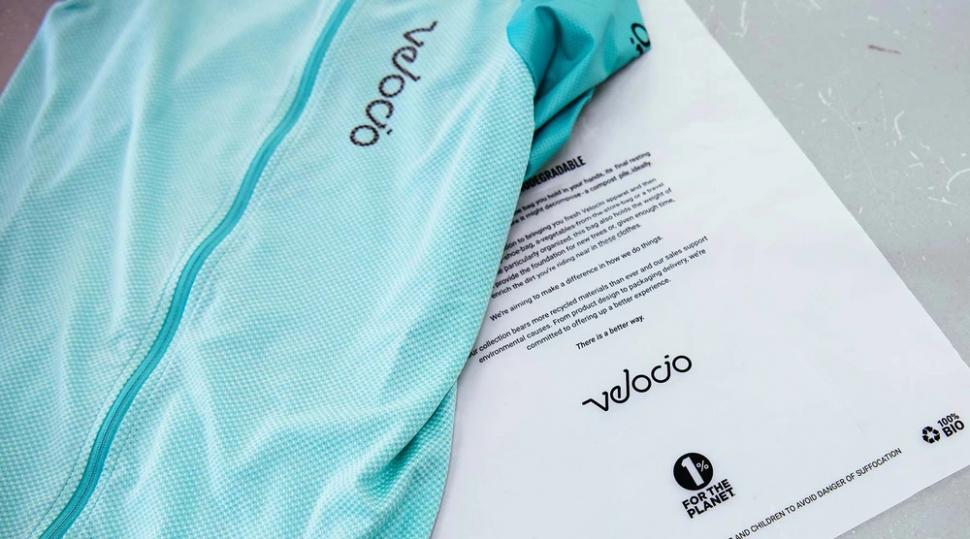
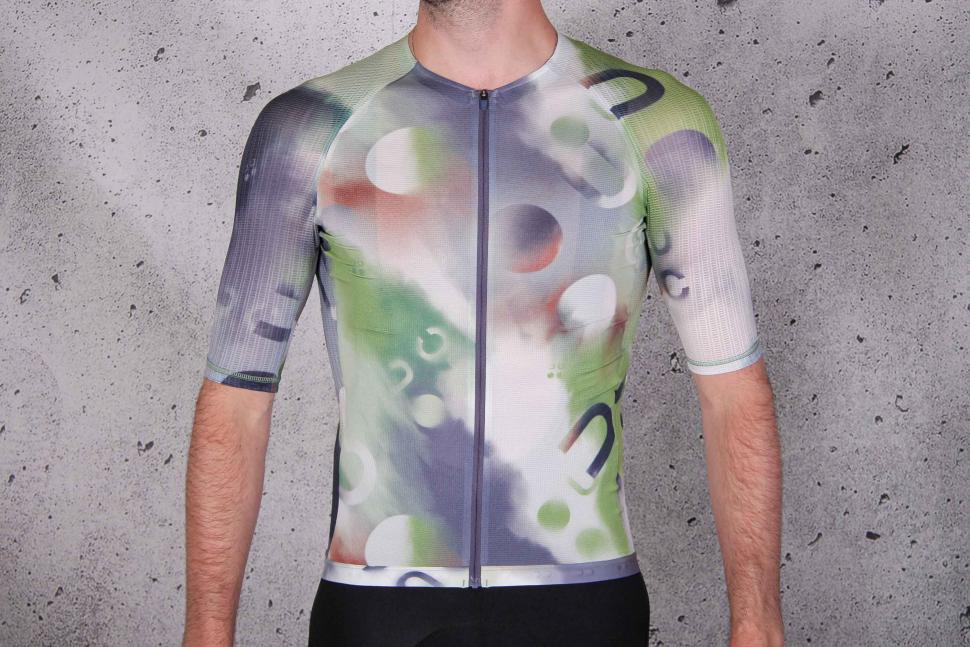


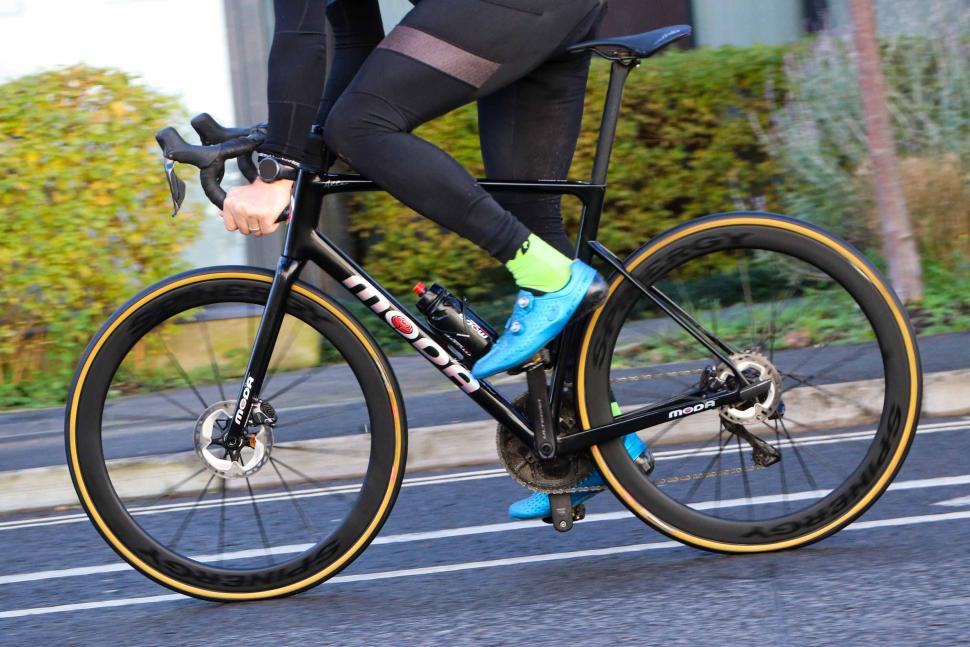

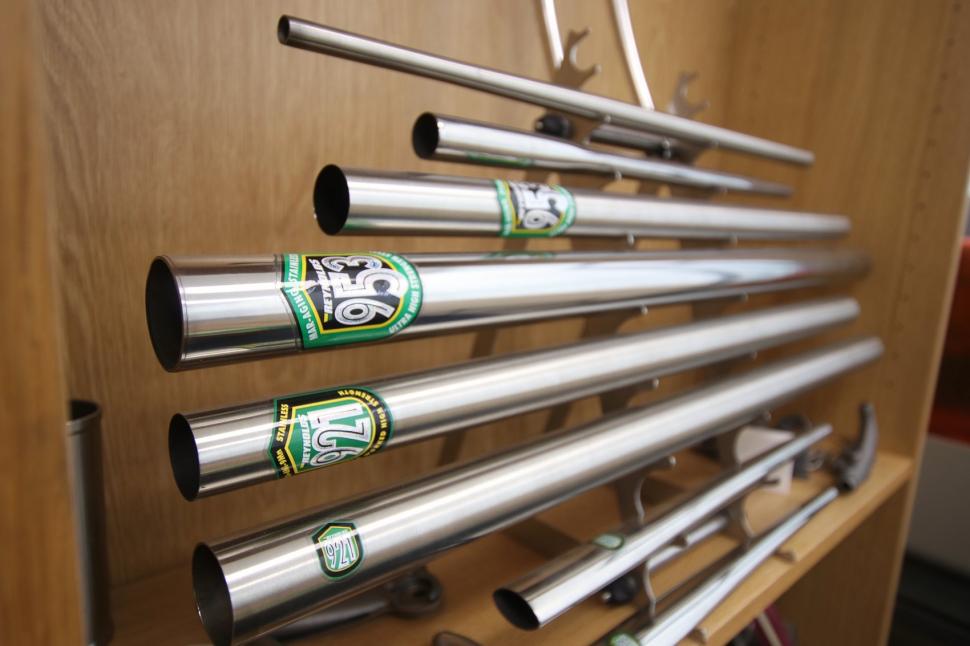
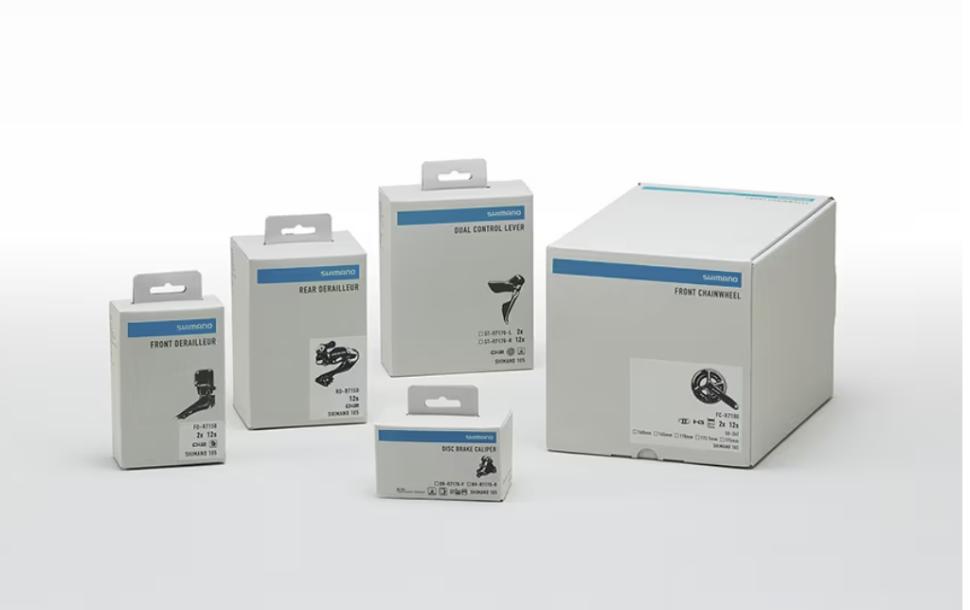

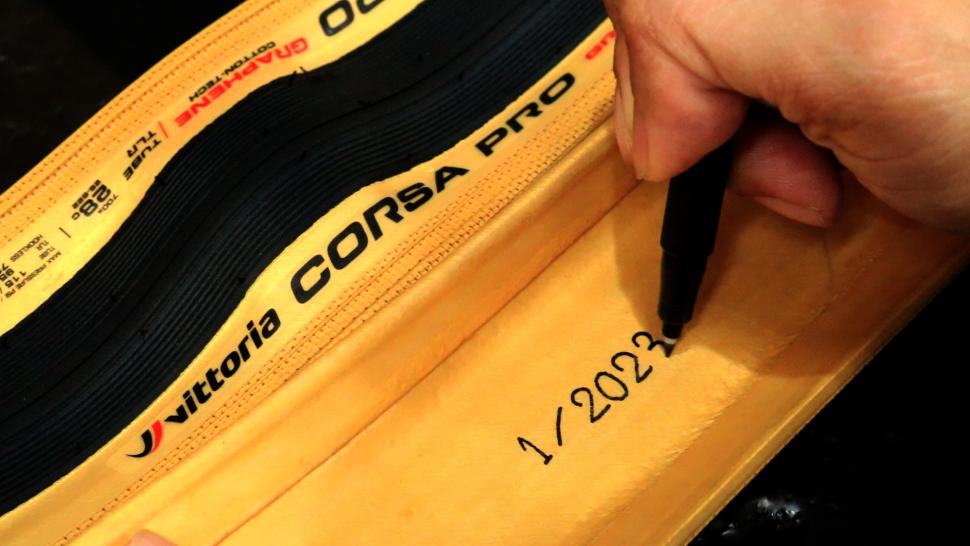

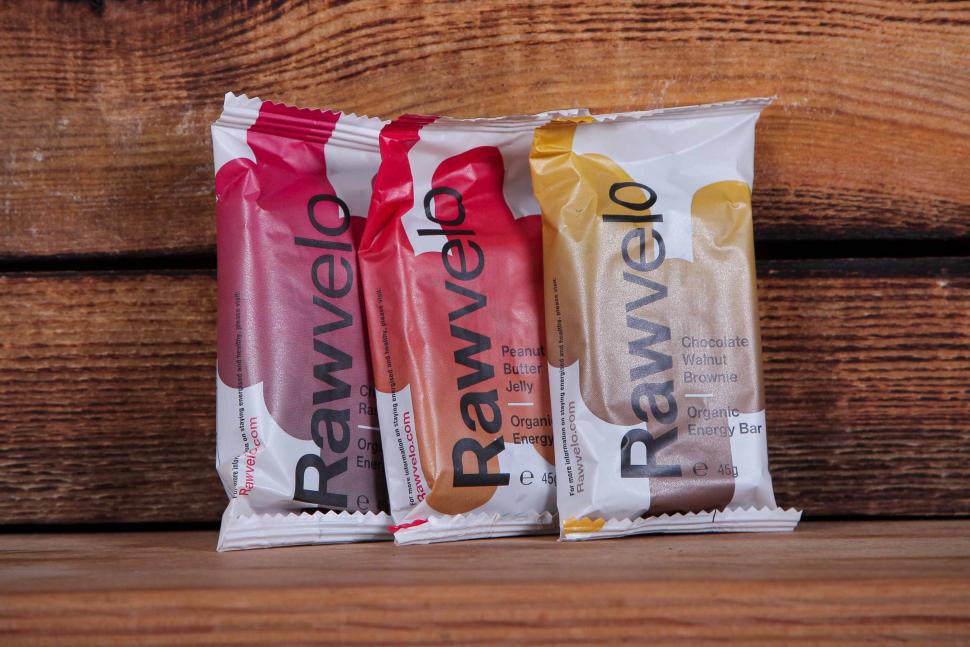

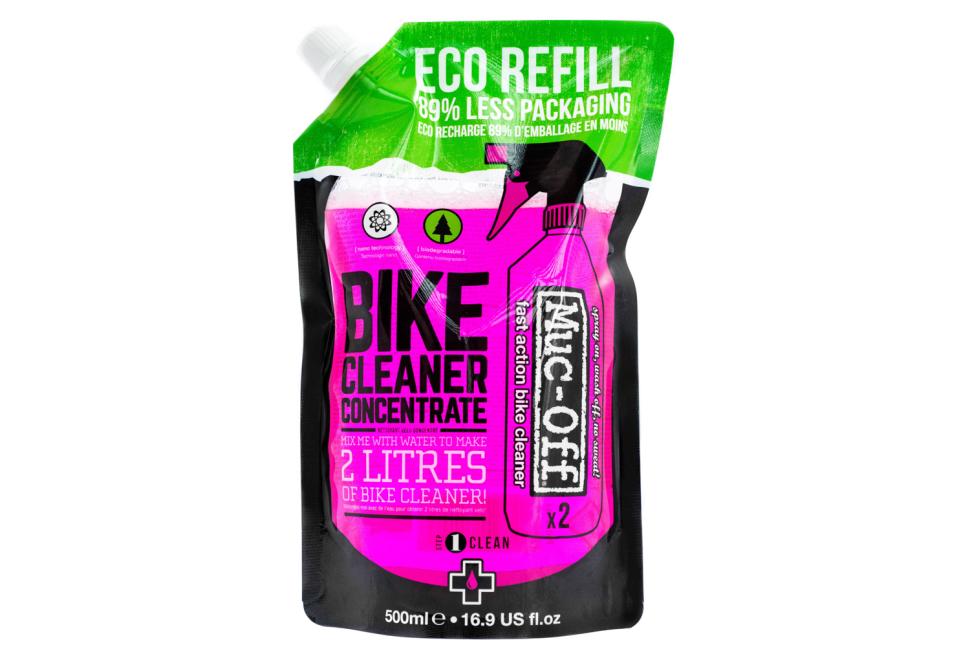
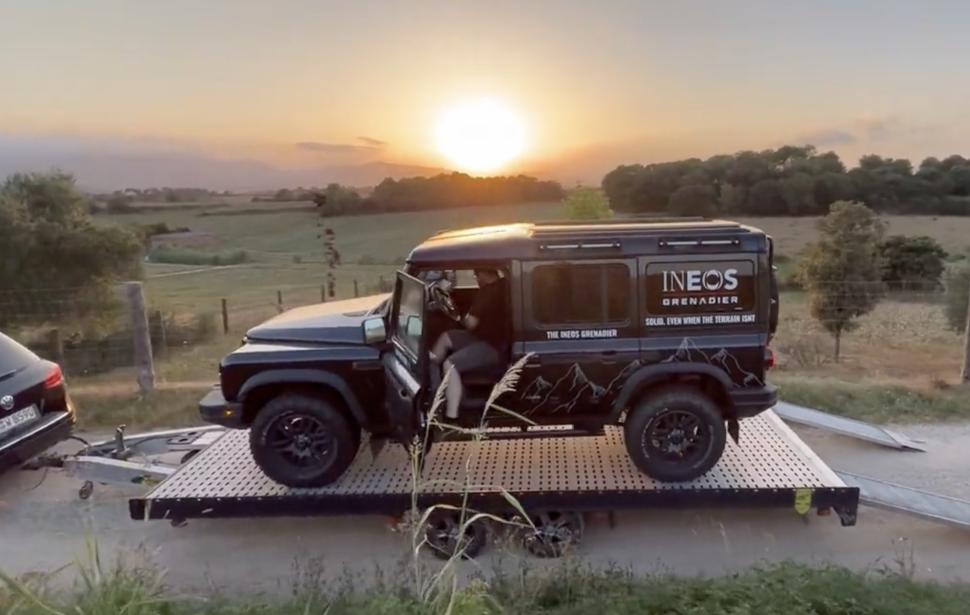

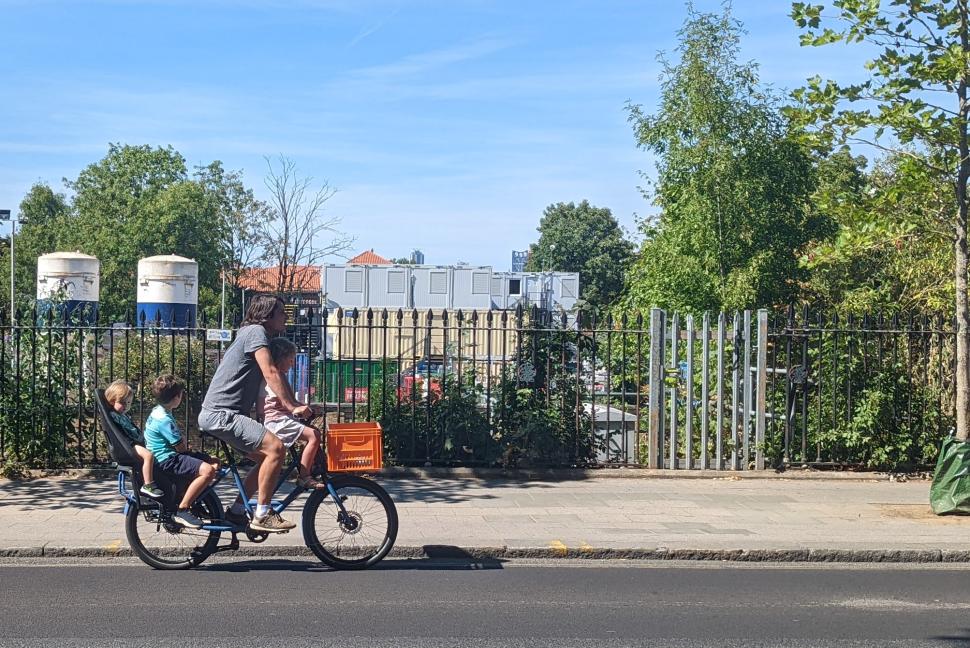
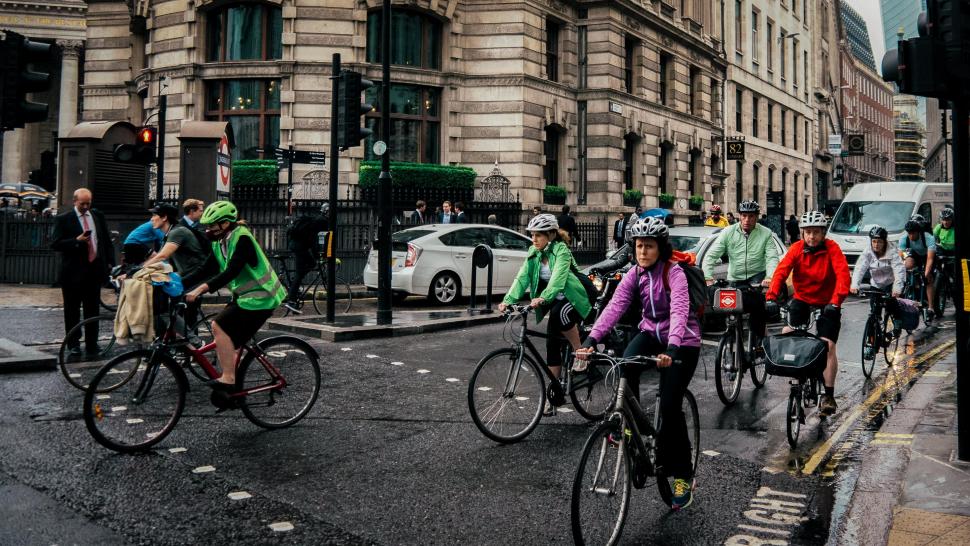
Add new comment
26 comments
I presume you are referring to China, which has built huge amounts of renewable generation, and will peak its emissions in 2024, according to the highly-respected Carbon Brief:
https://www.carbonbrief.org/analysis-chinas-emissions-set-to-fall-in-202...
National carbon footprints - including Britain's - have included the carbon produced in the goods we buy from abroad for decades now. Our national carbon figures are reducing because of China's investment in renewables.
How about plastic pollution? Cleats are plastic and disposable – could it be possible to have cleats that don't wear out?
They already exist in the form of metal SPD instead of plastic SPD-SL, I switched after getting fed up with buying new cleats every six weeks or so (so much foot down in London) and wouldn't go back. For me the advantages of a cleat which pretty much never wears out (I've never worn one out, anyway, the shoes have always worn out first and some cleats are on their fourth pair of shoes), double sided "never miss" clipping in, easy walking and being able to use all my shoes with all my bikes far outweigh the minimal power advantage.
In my experience as a bike workshop owner in East London, cyclists, by which I mean anyone for whom riding is their lifeline, transport, leisure and exercise choice..recycling is a necessary choice driven by financial restrictions. We are regularly asked for 2nd hand components ahead of new. Our customers don't by a new bike every year..and if that is the model of our industry it is broken and doomed
Don't forget that no-one can buy secondhand until someone else has bought it new and then replaced it or no longer need it. But I agree that the 'new bike every year' thing is crazy, though does anyone actually do that?
The big problem is that bikes are durable, take a lot of abuse and are relatively cheap to keep in shape. This is everything that is wrong to the scumb^H^H^H^H^Hmarketing department who want us to buy a new bike every year.
I still ride a bike with a tapered bottom bracket and and 7 speed rear + triple front and can still buy those new. (The BB was an upgrade I did after the original adjustable cups wore out - it wasn't a bling upgrade - honest).
Consumerism and fashion is what makes bikes (and lots of other things) less environmentally sound than they should be.
I still ride a bike with a tapered bottom bracket and and 7 speed rear + triple front and can still buy those new
This indicates that the bike industry is rather less evil than it's made out to be- the stuff is still available. They provide what people are prepared to buy, which is fair enough in a capitalist system. If it were left to people like me, prepared to stick with what works well enough, we'd still have down-tube shifters and manual lens focussing. I'm still on 9-speed and still use a triple from over 20 years ago on my Merlin. I am prepared to believe that Shimano CUES will also cater for the Good Enough Gang!
I've ridden the same bike for 8 years. I use it for touring, mbt, gravel , LEJOG, C2C and endurance. A steel framed Jamis Aurora. I bought second one with discs off eBay as a spare ... total cost for both my super bikes ..... <£600 ..... The whole Green thing is a con, carbon offsets are a false premise. Why tie yourself up in Green lifestyles when the planets biggest countries are building coal power stations faster than I can ride JOGLE.
Not a good excuse for refusing to act.
Should small-time crooks carry on burgling houses because big-time crooks are screwing everyone on a much larger scale? Is it OK to RLJ because so many people drive at 40-50 in a 30 mph zone or on the motorway at 90 mph, tailgating, cutting in etc?
If you're not part of the solution then you are part of the problem.
Those coal power stations make consumer goods that we buy. This is our problem, even if 'officially' the environmental impact remains with the producer.
Our Shimano goods are manufactured using modern slavery ... is that acceptable...no ... I thought not ... but greenwashing of cycling continues .... electric cars built with coal power in China .... you ok with that ? .... your IPhone ...was not made with renewable energy .... Stop Greenwashing .. !!! Accept reality ....
(ignore)
Think you've divided the numbers the wrong way round.
Yes, sorry, noticed right after I posted!
That's ok, apologies if it came across as pedantic...wasn't my intention.
Bike lifetime travel of 19200km? Where do they get that figure from? So I must really need a new bike every year, then. Funny I hadn't noticed that before.
Maybe that's the average. A guy who sits next to me at work was talking to me about getting a new bike because his is worn out. He's never replaced a single thing on it, not even the tyres! He uses it to tow his children in a trailer within his neighborhood, and I doubt it has 1000 miles on it. Maybe 1000 km.
I suggested he get a tune-up.
I only do about 10,000 km a year, but it's spread across multiple bikes. The most I've put on one before selling it was over 29,000 km, but I bought it used so it had somewhat more than that on it.
It's not just carbon foot print it's also how much we throw away.
I think we should all consider how much cheap cycling kit we buy and it's impact. Buy brands which are better quality made to last and be repaired.
A handmade steel frame might seem like a big lump but considering it's still useable as a bike after decades means it's better all round.
Fair point but cheap doesn't always mean crap and expensive prices don't necessarily provide better quality or less environmental impact.
A few clothing brands take repairability seriously now but nowhere near enough, most of them really only want you to keep buying more new stuff (which is understandable as it's simply how our economies have operated until now, and they need to pay their bills).
How you treat stuff, particularly clothing, makes a big difference to how long it lasts. I have used Aldi winter gloves and silly-cheap jerseys from Tesco that lasted as long as anything from cycling brands costing 5x the price or more. They may not get kudos from the style gurus but are fine for commuting, which makes up the bulk of my riding.
How you treat stuff, particularly clothing, makes a big difference to how long it lasts. I have used Aldi winter gloves and silly-cheap jerseys from Tesco that lasted as long as anything from cycling brands costing 5x the price or more
Agreed. I have lots of stuff from Aldi, including what I was wearing on Snowdon and Lliwedd last weekend during Storm Elin (I put that in because my daughter is named Elin) and it all did very well. I am also still using cycling kit from Performance (made in US late 80s) and 25 year old Parrot, made in the UK
Carbon footprint of bikes and accessories is really really minimal. Remember that each of us approximately uses half a kilo of packaging per day. If you want to buy super fancy ethical gear that will be unreasonably expensive, the best option is save this money for solar panels or better house insulation and buy cheap unbranded gear.
A big carbon footprint contributor is also food and hot bath. A short bike ride that you will return hungry and dirty, may be better done on a e-bike if carbon footprint is taken into account.
*edit added the e- on bike. But the writer of the article very correctly mentions the benefits of e-bikes.
I would treat any brands' claims with suspicion. It's easy to play with nice words in your marketing as a cover for not actually making any significant changes. Like the proud claims of using recycled packaging companies love to talk themselves up, focus on the little things and ignore the areas where the biggest savings can be made. Muc-Off have done well out of fancy packaging for things where boring household cleaning products do the job just fine.
Governments are worse. Banning supermarket carrier bags or disposable coffee cups may seem worthy but are a miniscule part of the problem, and demonising Insulate Britain protesters after you've scrapped the green homes scheme and blatantly don't GAF about planning regulations is only making it worse.
Food, heating/lighting and transport are supposed to be the big ones. Meat & dairy, burning fossil fuels and living in large, poorly-insulated houses, driving and flying all ramp up your footprint. But if we talk about the little things enough then people will carry on as before and ignore the multiple environmental elephants in the room.
Couldn't agree more, we have to focus on the big problems, if we want some serious results.
Christmas-related purchases are an environmental nightmare. Whether it's toys & their packaging, the company meals and Senseless Santa unwanted gifts, the mountains of fancy food (I hate to think of how much it is thrown away).
My pet hate is the massive stacks of Quality Street, Heroes etc at the front door of all the supermarkets, all of them made of thick, opaque plastic.
The answer for most of us, most of the time, is simple: Use Less. But that doesn't make the billionaire boys even richer so we can't have any of that!
We decided this year that pretty much everyone on our gift list, including us, has enough "stuff" and we're giving experiences this year. Gift cards to Ticketmaster (yes I know they're a terrible company but there's no way around them), their local cinemas, rock climbing gyms, etc.
Exactly this.
Concentrate on minimising the carbon footprint of your heating and travel and most of the heavy lifting is done.
Cutting one return flight a year will have more impact than any 'sustainable' clothing/packaging etc. ever will.
With the money you save by flying less you can switch your boiler for a heat pump and reduce your annual carbon footprint by at least another tonne.